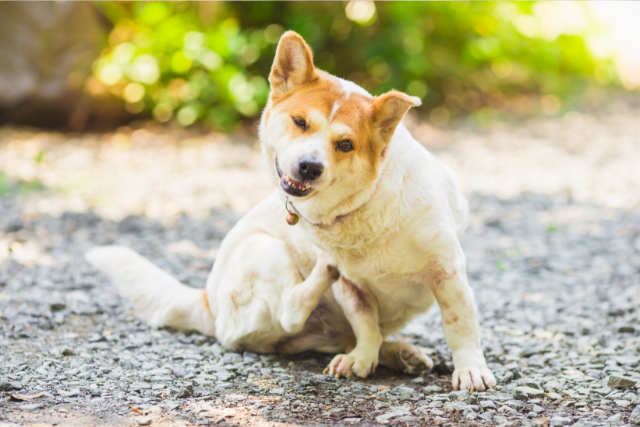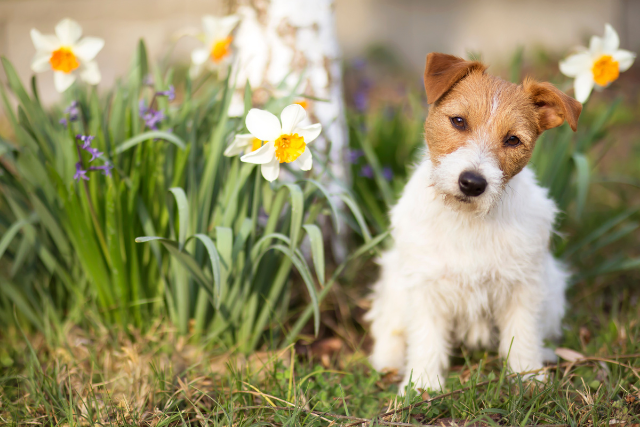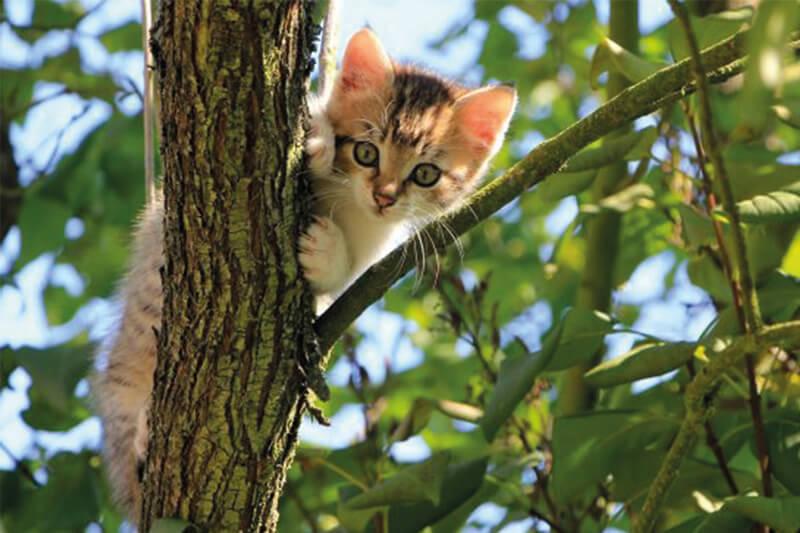Seasonal Allergies and Your Pet
Spring is in the air! For many of us, the smell of freshly cut grass, wildflowers, longer days and warmer weather might seem appealing; but did you know that just like humans with hay-fever, dogs and cats can also be prone to seasonal allergies! Unfortunately, the symptoms of allergies are often a little […]

Spring is in the air! For many of us, the smell of freshly cut grass, wildflowers, longer days and warmer weather might seem appealing; but did you know that just like humans with hay-fever, dogs and cats can also be prone to seasonal allergies!
Unfortunately, the symptoms of allergies are often a little subtler and harder to spot in our furry family members (with far less sneezing involved) so here at Protexin Veterinary, we have put together this handy guide to help you recognise the signs and symptoms of some of the more common spring and summer allergies.
You can jump straight to the following sections if you prefer:
Allergy symptoms in cats and dogs can include (but are not limited to):
- Itchy skin which may result in over-grooming/persistent licking (especially paws)
- Dry Flaky Skin which can appear as ‘dandruff’
- Skin infections which can present as skin rashes, red patches, fur loss and scabs/non-healing ‘wounds’
- General redness which is often most noticeable on facial areas including the muzzle, eyes and nasal regions (as these areas have less fur in many animals).
- Hives these may present as multiple ‘bumps’ under the fur (usually appearing within minutes to hours following exposure to the allergen)
- Ear disorders which may cause excessive head shaking, ear discharge (with or without a change in odour/’bad smell’), redness of the ears, crusting and scaling of the ears, matted fur in ears, ‘musty’ smelling ears
- Gut problems which may manifest as diarrhoea, reduced appetite, intermittent vomiting, gurgling sounds, increase in flatulence.
- Discharge from eyes/nose.
- Sneezing/coughing/wheezing although this is far less common in cats and dogs compared with humans

If your pet is showing any of these signs we recommend consulting your veterinary surgeon as soon as possible as these symptoms can be associated with an array of different disorders.
What type of environmental factors can our pets be allergic to?
Just like us, our pets can have allergic responses to many substances in their environments, many of which are impossible to eradicate entirely. These can include (but are not limited to):
- Grasses, trees, flowers: There are thousands of species of plants, any of which can potentially trigger allergies in a susceptible pet
- Dust mites: no matter how clean your home, there is no way to completely eliminate these microscopic little critters
- Mould and fungal spores: Even if your house is completely mould free, these organisms can be found happily floating around in the air (levels will be higher at different times of the year)
- Flea allergies: This type of allergy is particularly common in warmer months when flea populations significantly increase.
So what can we do to help?
Firstly, if you suspect your pet may be suffering from an allergy you should contact your veterinary surgeon who will be able to recommend appropriate diagnostic testing to hopefully isolate the main culprits; there are also many treatments your vet can prescribe to help control the symptoms of allergies. If your vet diagnoses your pet as suffering from environmental allergies there are several measures you can take to help reduce the symptoms (even if it’s not possible to eliminate the cause) which you can incorporate into your pet’s treatment plan:
If your pet is allergic to any plants (including grasses, trees and flowers) you may find that their symptoms are exacerbated during specific months of the year. You can help minimise the effects of plant allergies by:
- Trying different exercise/walking routes (avoiding specific areas such as fields/woodlands during the months your pet is most severely affected)
- Wipe your pet with a damp cloth after each walk/trip outdoors – concentrate on the legs, paws, face and belly (this can help remove pollen spores and grass seeds)
- Groom/brush your dog or cat regularly – this can help to remove any shedding fur and environmental debris, it can also help to stimulate the blood flow to the skin and alleviate itching

If your pet is allergic to dust mites:
- Keep your pet’s environment as dust-free as possible
- Regularly wash bedding and blankets (either use a pet-safe sensitive detergent or no detergent at all)
- Regularly groom/brush your pet to remove excess dust and environmental debris from their fur
If your pet is fed kibble/dry food:
- Give the biscuits a quick ‘rinse’ with cold water prior to feeding to remove excess dust
- Wipe your pet’s muzzle with a clean damp cloth after each feed to remove excess dust
- Take care when using the ‘end’ of a bag of food as biscuits at the bottom of the bag tend to have excessive dust coatings (you can soak these biscuits in a small amount of water to remove the dust)

If your pet is allergic to moulds/fungal spores:
- Keep your pet’s environment as clean and DRY as possible (moulds and fungi like moisture) – this is especially important if your pet is housed outside.
- Avoid storing food/bedding in areas that may have higher exposure to mould and fungal spores (places that are dark and have a higher risk of dampness such as basements and sheds)
- Ensure your pet’s environment is adequately ventilated with well-circulated air
- Bathing with specialised/medicated shampoos may be required (speak to your vet for advice regarding bathing frequency and product recommendations as bathing too frequently can exacerbate skin symptoms)
If your pet is allergic to fleas:
- Monitor your pet closely for any signs of excessive licking/grooming – especially the groin region and along the back towards the tail base.
- Monitor your pet for signs of scab formation (the skin will feel lumpy and uneven) and/or fur loss, especially in the region of the tail base.
- Ensure ALL cats and dogs in the household are regularly treated with a high-quality flea-treatment (speak to your vet for current recommendations) as cats that venture outdoors are often the main source of re-infestation.
- Ensure you treat the environment regularly using a good quality environmental flea treatment. Fleas feed on animals but breed in the surroundings– they particularly like carpets, fabric furnishings and cracks in laminate/wood floorings (speak to your vet for product advice and take care to follow all safety guidelines).
You can monitor your pets for signs of fleas by looking for flea dirt:
Using a fine-toothed comb (a child’s ‘nit’ comb can be ideal) gently brush the comb through the fur around the tail base of your pet (try and get as close to the skin as possible) and tap the contents of the comb onto a lightly dampened piece of plain paper. If you see any visible brown/black spots use a finger to gently smear them across the damp paper – if they leave an orange or ‘rust coloured’ smudge then this is a positive test for flea dirt and you should promptly treat all pets and the environment (as advised above)
We hope you find these tips useful and that they help with keeping your pets happier and healthier as the weather (hopefully!) warms up in the coming months.
 Pet Owner
Pet Owner 



